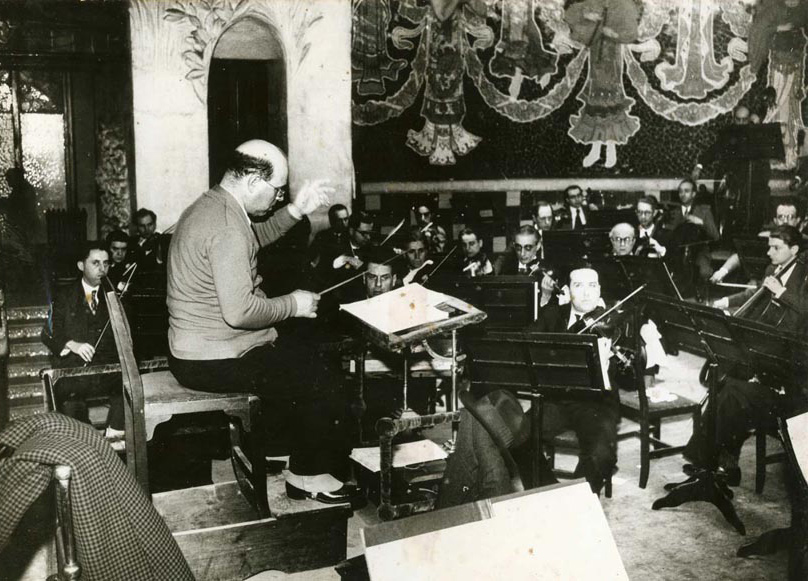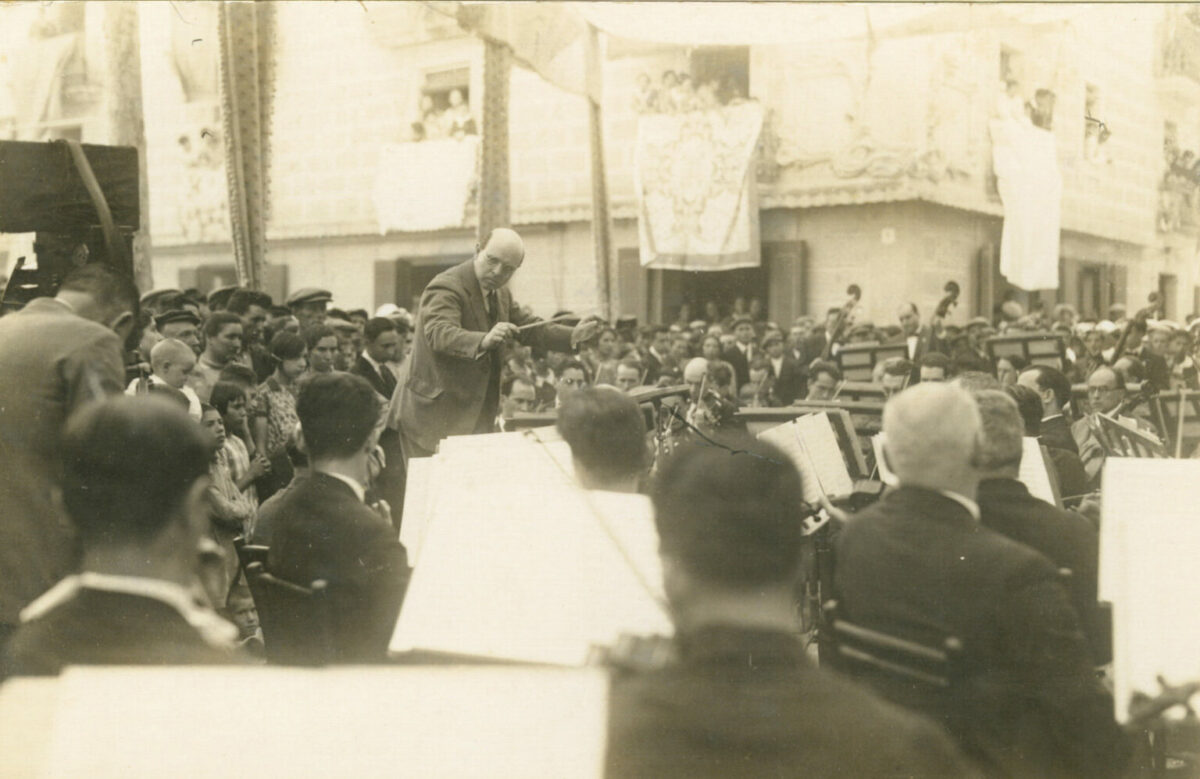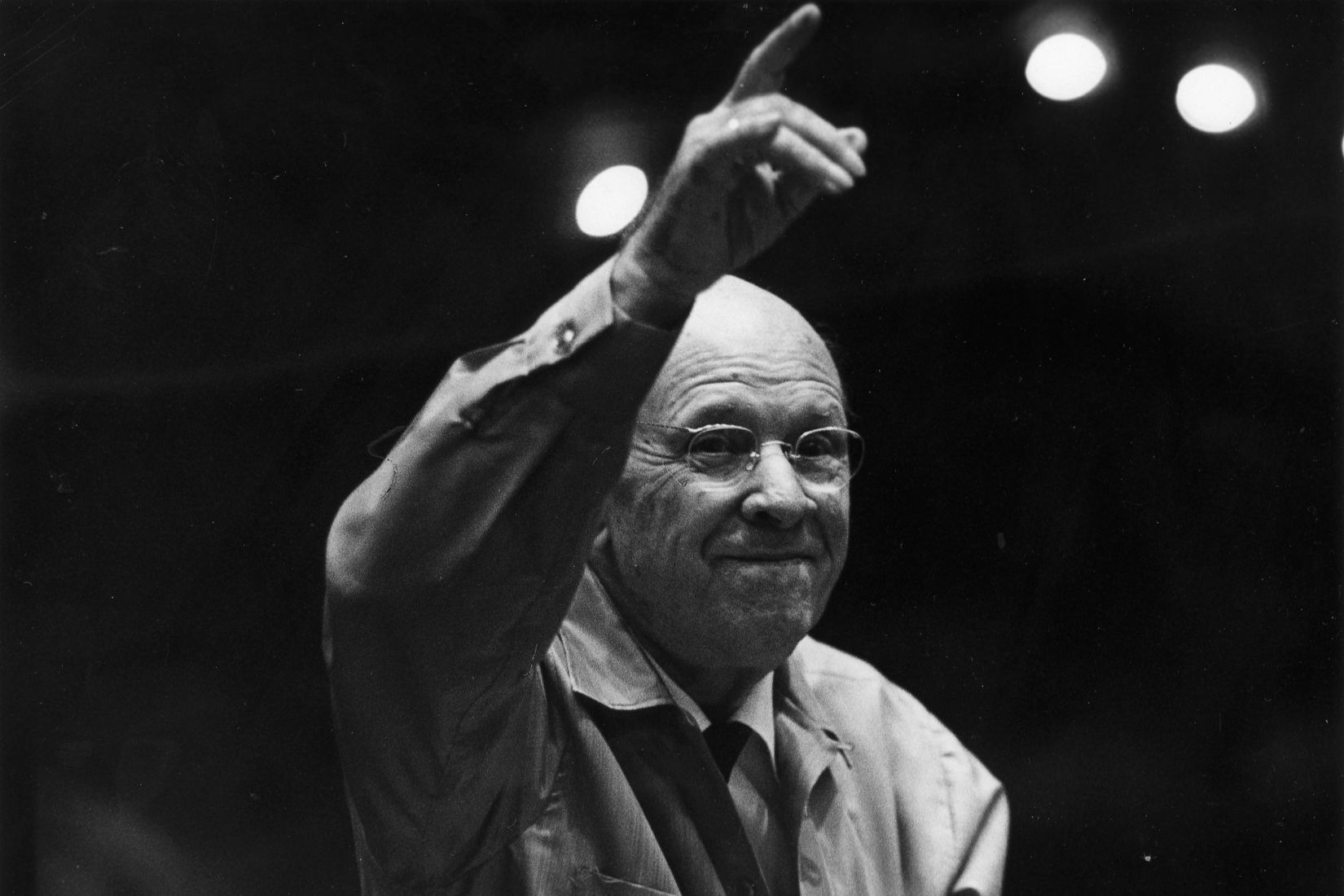Centenary of a project of musical excellence and social commitment
Pablo Casals is undoubtedly one of the most revered names in Catalan culture. He was a “total” musician: an innovator and virtuoso performer who elevated the cello as a solo instrument, a fine composer, and an extraordinary conductor. The Pablo Casals Orchestra was an exceptional musical project created and financed by Pablo Casals.

Pablo Casals’ passion for conducting had always been present, but his career as a soloist did not allow him to develop it to its fullest extent. As Casals admitted himself, he had been very happy playing the cello, but it did not give him complete satisfaction. For Casals, the only instrument without limitations was the orchestra. On one occasion, he said:
“If I have been happy playing the cello so far, what a happiness feeling once I have the greatest of all instruments, the orchestra!”
At the age of 17, he conducted the first rehearsals of Enric Granados’ María del Carmen. In 1908, when he was 31 years old, he began in earnest as a conductor, in Paris, with the Orchestre Lamoureux. Thereafter, he was a regular guest conductor all over the world.
In 1919, after leaving his residence in New York, he settled in Barcelona. Affected by the human drama of World War I, he concentrated on two main objectives: the creation of a symphonic project and music’s social commitment. Just as now, the world was living through a terrible pandemic: the misnamed “Spanish flu”, which made the post-war period in Europe even heavier.
In 1919, on his arrival in Barcelona, the musician had already accumulated a successful career as an international soloist and a renowned prestige as a conductor. He had conducted many symphony orchestras, including the London Symphony Orchestra, the New York Symphony Orchestra, the Czech National Symphony Orchestra, the BBC Symphony Orchestra and the Vienna Symphony Orchestra.
The creation of the Orchestra Pau Casals
Casals set out the project of creating a quality symphonic ensemble. Although he initially hoped for the collaboration of musical institutions and entities, and the support of patrons, he soon discovered that his project did not receive the support and artistic complicity he had imagined. Therefore, he decided to personally select the musicians and finance the cost of the orchestra. He also relied on the financial support of a small group of patrons. More than 370 concerts, most of them given between 1920 and the beginning of the Spanish Civil War, indicate a frenetic activity, which allows us to understand the musical and social impact of the orchestra.
He created a team of highly qualified and committed people to promote the project, such as Soldevila, Carles Vidal-Quadras, Jeroni de Moragas, Felip Capdevila, Josep de Montoliu, Josep Andreu Miralles and Joaquim Pena. Later, Joaquim Pena, Felip Capdevila and Francesca Vidal in particular.
The Orchestra Pau Casals performed its first concert on 13th October 1920 at the Palau de la Música Catalana with the special collaboration of his brother Enric Casals, first violin, and Bonaventura Dini as first cello, and more than eighty musicians.
The repertoire included mainly works by Bach, Beethoven, Vivaldi, Saint-Saëns, Arnold Bax, Ernest Bloch, Enesco, Béla Bártok, Richard Strauss, Gustav Mahler, Prokófiev, Webern, Schönberg, and Catalan composers such as Garreta, Granados, Albéniz, Millet, Cassadó, Enric Morera, Robert Gerhard, among others.
For the next seventeen years, the orchestra was conducted by the best names of the day, with the participation of great international musicians who became part of the Pau Casals Orchestra’s repertoire of regular soloists.
Another reflection of Casals’ personality and of the philosophy and values he promoted was the decision to focus the Orchestra’s activity on Barcelona, rejecting international tours. This would have been an important source of income, but it did not fit in with the commitment to bring symphonic music to everyone.
Musical excellence, international prestige and local popularity
As the Republic came to power, the Pau Casals Orchestra’s concerts outside Barcelona multiplied, which were often of a charitable nature to finance social projects such as hospitals, asylums, etc.
Very important names in music were invited to conduct the orchestra or to participate as soloists: Richard Strauss, Arnold Schönberg, Igor Stravinski, Alfred Cortot, Manuel de Falla, Joaquín Turina, Enric Morera, Joan Lamote de Grignon, Joaquim Cassadó, Robert Gerhard, Gaspar Cassadó, or Eduard Toldrà, among others.
Parallel to the Orchestra project, in 1925 Casals promoted the creation of the Associació Obrera de Concerts (Workers’ Concert Association), a civil entity self-managed by the workers with the aim of facilitating the access of the working classes to the same extraordinary music that the Pablo Casals Orchestra offered to the more affluent classes.

The end of the Pablo Casals Orchestra
Unfortunately, the Spanish Civil War and the triumph of the Franco regime brought about the end of the Pablo Casals Orchestra. Casals went into exile in Prades, in the south of France. The memory of his enormous artistic impact still lives on. Casals devoted the rest of his life to orchestral conducting, vindicating the greatness of music as an expression of commitment to peace and people.
The celebration of the Pablo Casals Orchestra’s Centenary will be held in 2020-2021, with concerts, exhibitions and cultural activities. In spite of the Covid-19 situation, the projects are moving forward, with new dates and new arrangements.
